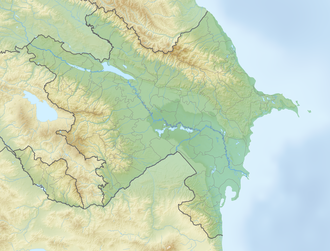Fauna
During the drying up of Aggol in 1943, the strongest specimens of nutria that lived in the lake, settled in Mehman lake. [7]
The lake is inhabited by 34 species of plankton. [4] There are populations of pike, carp, bream, and pike perch. [4]
In May–June 1954, the expedition of K. Gambarov observed a mixed nesting colony, with white-tailed lapwing rare for Azerbaijan. [8] Although the expedition did not identify bird nests, observations suggested that the white-tailed lapwing is likely to nest here. In the colony, in addition to these birds, were also common terns, black terns, barnacle terns, black-headed gulls, prairie beetles, and stilt. [4] [9]
This page is based on this
Wikipedia article Text is available under the
CC BY-SA 4.0 license; additional terms may apply.
Images, videos and audio are available under their respective licenses.

